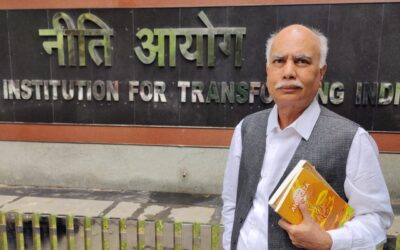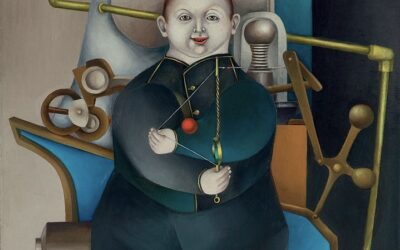Who does not like success? Human beings are driven to succeed from early childhood. Parents celebrate when their toddler learns to stand up, speak its first words and go to school. Then, in school, from studies to sports, children compete, and by the time they become adolescents, their personalities are formed around it…

A View through Technology Glasses
A View through Technology Glasses
The Australian writer and broadcaster, Clive James (1939–2019), curtly defined modern times when he said, “It is only when they go wrong that machines remind you how powerful they are.” While we are all amused living in an internet-connected world, it is important to look at the braggadocio of both, our past and future and have our moments of doubt. As a technologist, I find technology as an enabler of both, good and bad. As Bill Gates put it, as automation applied to an efficient operation magnifies the efficiency, when applied to an inefficient operation, magnifies the inefficiency as well.
I recently read Blockchain Revolution: How the Technology Behind Bitcoin is Changing Money, Business, and the World, written by the Canadian father-son team of Don Tapscott and Alex Tapscott. The book was published in 2016 and updated in 2018. I found the narrative to be a brilliant mix of history, technology, and sociology and feel it is a must-read for all young people who are preparing to face the Web3 metamorphosis.
The transformation of the financial technology sector in India is indeed phenomenal. The way the Unique ID project survived a long-drawn disruption and finally embraced more than a billion people is an example for the entire world. The governmental financial assistance and subsidies are directly transferred to beneficiaries. Tax collection is automated, and many government services are done automatically and efficiently. India, as a nation and with its human resources, is best positioned not only to lead the blockchain revolution, but to become a leading nation in the process when it reaches 100 years of independence in 2047.
As of now, blockchain is not understood by many people outside the computer science sector. It is typically reduced to mere cryptocurrency, which is akin to comparing the Internet with email. Rubix, for example, is a global green blockchain with the ability to solve some of the world’s greatest problems, from climate change to property ownership, to implementation. And this new technology is also being passionately promoted and developed by two Indians, K. Chakradhar Reddy, and Mahesh Ramanujam.
What I find most striking is that for the first time in history, people who hold the ground – farmers, artisans, and factory workers – have a real chance of asserting their rights and being paid directly for their work. Natural assets such as water, carbon, and air are essential for life on earth, and cannot be converted into commodities by clever businesspeople. Each water bottle sold for Rs. 20 per liter must declare from where the water was drawn and how it was paid for.
Who is making the new wealth and how? The American ecologist, Garrett Hardin (1915–2003), called a situation where shared common resources are depleted, a tragedy of the commons. Not very long ago, Mumbai was spread over seven islands, and Bengaluru and Hyderabad were cities dotted with lakes. Systematically, water bodies were encroached upon and sold as properties by a collusion of politicians, bureaucracy, and banks who doled out loans for the buildings constructed on lands of dubious titles and sold at inflated rates. Most people living in high-rise buildings are indeed lifetime debtors.
As the regular reader of my blog knows well, I do not consider indicators like GDP or Sensex, or even the $ value of our currency as guideposts to development. Even inflation is a much-misunderstood term. The issue is of people over natural resources, sanctity of the right of people traditionally living over common lands, which includes the poorest and the tribals, and enforcement of the law so that the rich and powerful cannot evade its provisions while the poor are punished in the absence of legal help. Technology is now available to fast-track the judicial process and punish the guilty without harassing the innocent. Not making use of it is a mistake.
For India to be a developed country, every citizen must have equal access to public services, namely healthcare, education, and social security. Writing in the context of the United States, the Tapscotts called technology and democracy “not a happy story.” They write, “In the spirit of the saying, ‘The future is not something to be predicted, it’s something to be achieved,’ let’s reinvent the government for a new era of legitimacy and trust. It’s time to stop tinkering and launch transformation.”
India has adopted many traits of the US society and the manners of its democracy, and not all are good. Take, for example, the TV debates. Every evening an assemblage of speakers, mostly from a band of some 20-30 people, shout at each other. Even the anchors use a tone of inciting quarrels rather than moderating a debate. Public discourse is fragmented. Intellectuals have organized themselves into warring groups that are uncooperative and even hostile to whatever action or initiative is taken to change the status quo. Democracy needs a reasoned opinion, not just any opinion. Democracy needs legislative assemblies to debate, refine, and resolve issues. There must be decorum in these bodies.
Could blockchain technologies help improve our democracy?
The Tapscotts write, “Imagine the board of elections (commission in India) creating digital wallets for each candidate or choice, with approved voters allocated one token or coin each for each open seat. Citizens vote anonymously through their personal avatar by sending their ‘coin’ to the wallet of their chosen candidate. The blockchain records and confirms the transaction. Whoever ends up with the most coins wins. . . DEMOS, a new end-to-end (E2E) e-voting system. . . uses a distributed public ledger like the blockchain to create a digital ballot box that citizens can use to vote from anywhere in the world.”
Our technology institutions must come forward and make India lead the world in blockchain technologies and in the process, improve and prosper our own systems. When our own experts will demonstrate that blockchain is regulated by mathematics and is neither up to the whims of the governments nor to the wishes of the anarchists, people will agree. The book concludes by saying, “Like the first generation of the Internet, the Block Chain Revolution promises to upend business models and transform industries. But that is just the start. Blockchain technology is pushing us inexorably into a new era, predicated on openness, merit, decentralization, and global participation.”
Can India make a historical choice to use technology to change the status quo in terms of ownership of natural resources, and the real estate business, and make people vote from wherever they are rather than turn up at a particular booth and prove their identity every time, which can be a big put off for many people to vote? These three changes can be brought in by blockchain technology, for which the precursors are all available. What is needed is the political will to transform India into a developed country by including all its people in the process. The view through technology glasses is a bit unsettling, but certainly not dark.
MORE FROM THE BLOG
Our Success Must Not Fail
Altermodern
Over the past several months, I have been deeply immersed in the profound trilogy penned by esteemed philosophers Michael Hardt (b. 1960) and Antonio Negri (1933-2023) about how the modern world works and is likely to change.
Just Another Gear in the Desire Machine
In the winter of 1989, I visited Pune for the first time. I worked in the Defence Research & Development Laboratory, Hyderabad, as Project Manager for Airframe and System Integration in the ‘Akash’ missile project…








